Can a brand new, Chinese-built railway lay the tracks to Kenya’s future?
KENYA—
I sit on a train, halfway between Mombasa and Nairobi, on Kenya’s brand new Standard Gauge Railway. As we wait for another train to pass on the line’s single track, riders begin to stand up and peer through the closed square windows. Within minutes, a blur of white and orange flies past us, and a wave of whooping and laughter ripples through the coach. A grinning passenger turns to me and explains, “You can’t feel the speed from the inside of the train.”
The Standard Gauge Railway is the fastest train Kenya has ever seen. It operates at an average of 75 miles per hour. This is nearly double the speed of the country’s only other train line, the now-defunct Kenya–Uganda Railway, built in 1901 during the colonial era. As if to emphasize the point, the SGR opened 18 months ahead of schedule on Kenya’s annual anniversary of self-rule: Madaraka Day on May 31. The train line, which has been labeled the Madaraka Express, has been sold out every day since.
The passenger train runs between Kenya’s capital city, Nairobi, and the Indian Ocean port city of Mombasa; the trip takes five hours. This provides a much-needed alternative to buses that can take up to 11 hours to shuttle between the two cities. Traveling by bus means enduring a relentlessly bumpy ride over potholed highways. Also, Kenya has one of the highest road-death rates in the world, so there’s the very real potential of being among the casualties of a passing cargo truck.
The railway was primarily built to help ease the transport of 22 million tons of imports, which arrive every year at Mombasa’s ports and are hauled, mainly on those passing cargo trucks, to destinations around Kenya and as far away as the Democratic Republic of Congo and Rwanda.
Despite its obvious benefits, the new train line, the country’s most expensive infrastructure project to date, is controversial. In 2014, President Uhuru Kenyatta signed a $3.8 billion contract with the China Roads and Bridges Corporation, a Chinese state-owned construction company, to build phase one of a railway that will eventually extend to Uganda, Rwanda, South Sudan, and Ethiopia. The disputes started almost immediately: overfinancing, land acquisition, and the project’s environmental impact.
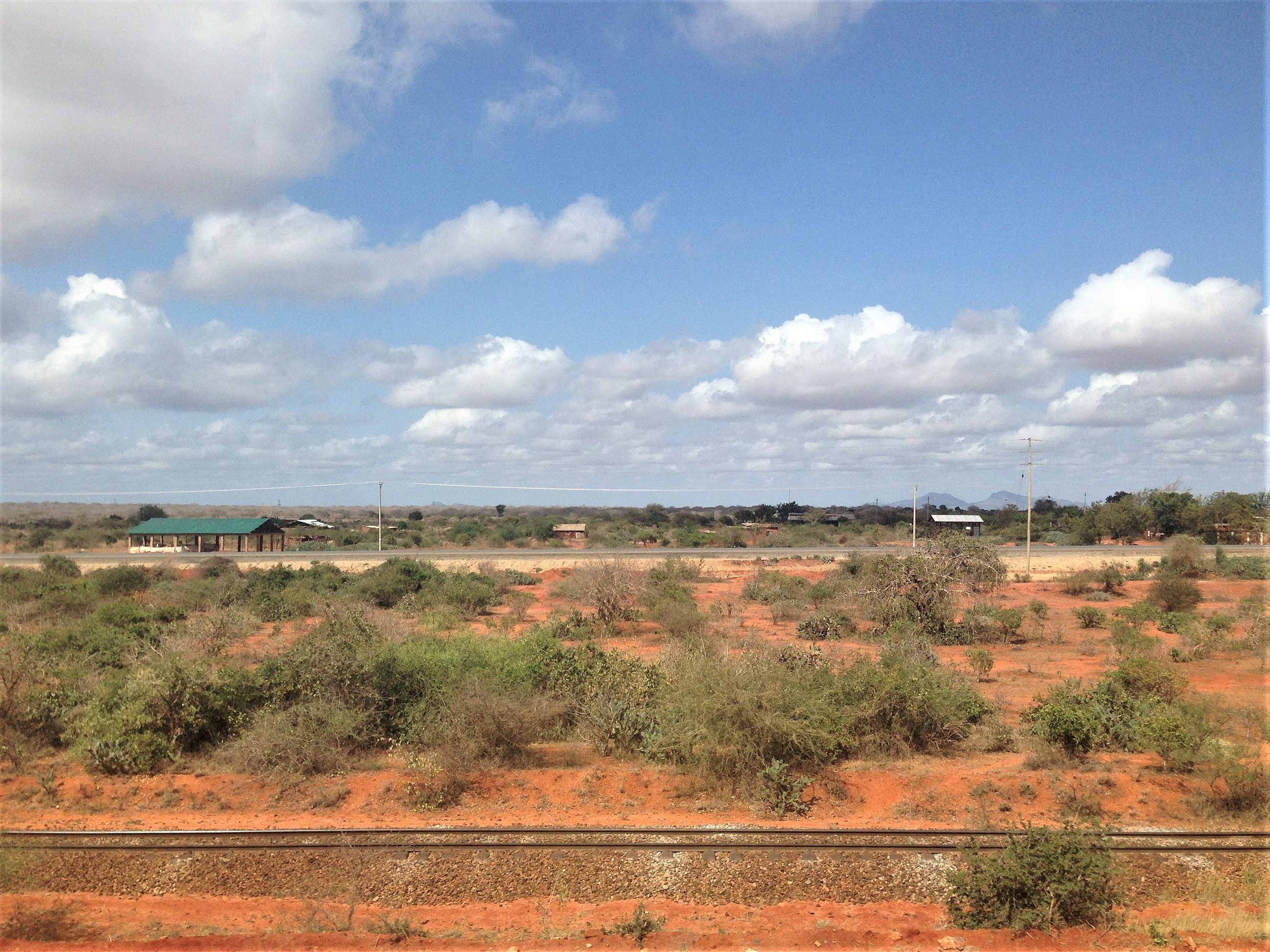
Critics of the railway question whether the benefits are worth the debt the government now owes to the China Export-Import Bank, which financed 85 percent of the project. The government had to purchase large swaths of the 295 miles of land that the SGR traverses, resulting in disputes over land valuation and compensation for displaced residents, which together cost another $290 million. This alone was more than double the original budget.
Finally, the line runs through two national parks. Although the Chinese construction company incorporated environmental protections into its design, conservationists have voiced concerns over animal safety in Tsavo National Park, where a large embankment has threatened elephants’ migration routes.
The new train runs once a day in each direction, and when I purchase same-day tickets on a rainy Friday morning in Nairobi, I feel that I have accomplished the impossible. Tickets are only available three days in advance of departure and are only sold at the train station. (An online booking system is still in the works.)
The Nairobi train station is 11.5 miles from the city center. When I arrive at the station in early August, throngs of people are lined up outside, their luggage in rows next to them. Station security paces up and down as guard dogs sniff at our luggage. Security measures are heightened in anticipation of the upcoming general elections on Aug. 8; elections have caused concern ever since 2007, when post-election violence caused the deaths of more than 1,000 people and displaced hundreds of thousands.

After five minutes in the security line, I enter the ticketing area only to find at least 70 people waiting in multiple lines by the ticket booths. A large monitor, nearly identical to those I’ve seen in Chinese train stations, shows that there are just two tickets left in first class and none left in economy.
When I reach the counter, I ask for a first-class ticket, which costs 3,000 Kenyan shillings (about $30 USD), and an economy return ticket, which cost 700 shillings ($7). After five minutes, I am informed that the credit card readers are not working. I don’t have any cash.
The attendant asks if anyone will give me cash that I could then pay back with M-Pesa. M-Pesa is Kenya’s innovative mobile money service, which allows people to make payments with mobile phones.
After pacing up and down the lines for several minutes, a quiet elderly man hands me 4,000 shillings. I thank him profusely, send him the money on my phone, and run back to the window.
The attendant quickly hands me the ticket and urges me to run as my train is leaving in 15 minutes. After two more security checks, I descend onto a huge platform and race to my coach. I am on the Madaraka Express.
The train leaves promptly at 9 a.m. As it pulls out of the station, I notice that Kenyan and Chinese staff are standing outside waiting for the train to leave. Worried about implementation issues, Kenya Railways recently subcontracted 400 Chinese nationals to help operate the train over the next 10 years.
Inside the train, passengers are seated in wide red seats. At the front of the car, placards depicting the flags of Kenya and China hang side-by-side. An announcement comes over the sound system warning parents to watch their children as train speeds will be quite high and the dangers of running through carriages may not be immediately apparent to first-time riders. Then “Chandelier” by Sia begins playing. I look out the window as the train passes through Athi River, a town where the first of the train’s seven intermediate stations are located.
Around 30 minutes into the trip, I decide to check out the dining car. I buy coffee, chips, and a banana for 250 Kenyan shillings (about $2.50). The coffee is served “white,” which means a cup full of piping hot milk and a packet of instant Nescafé.
You can’t get this experience on an 11-hour overnight bus
Sipping my coffee—which I rather like—I sit down across from a man and a woman seated cozily next to each other in a four-seater booth. They are a couple taking a weekend away from Nairobi, where they both work as clerical administrators. This is their first time taking the train.
The man, Anthony Rugutt, is laughing at the wrapping on his chicken salad sandwich, which reads “Nas Airport Services.” Rugutt assures me that it’s a good sandwich. He and his girlfriend, Monica Mutemi, are taking the train because it is fast, convenient, and safe.
But more importantly, it is an experience. “You enjoy the scenery, get to see the countryside, the wildlife, and you get to pass through the park,” Rugutt says. Looking out the window as the train passes through Machakos County, where herds of goats and cows idle in fenced areas alongside the train tracks, Rugutt and Mutemi observe that taking the train is a good way of seeing Kenya. You can’t get this experience on an 11-hour overnight bus.
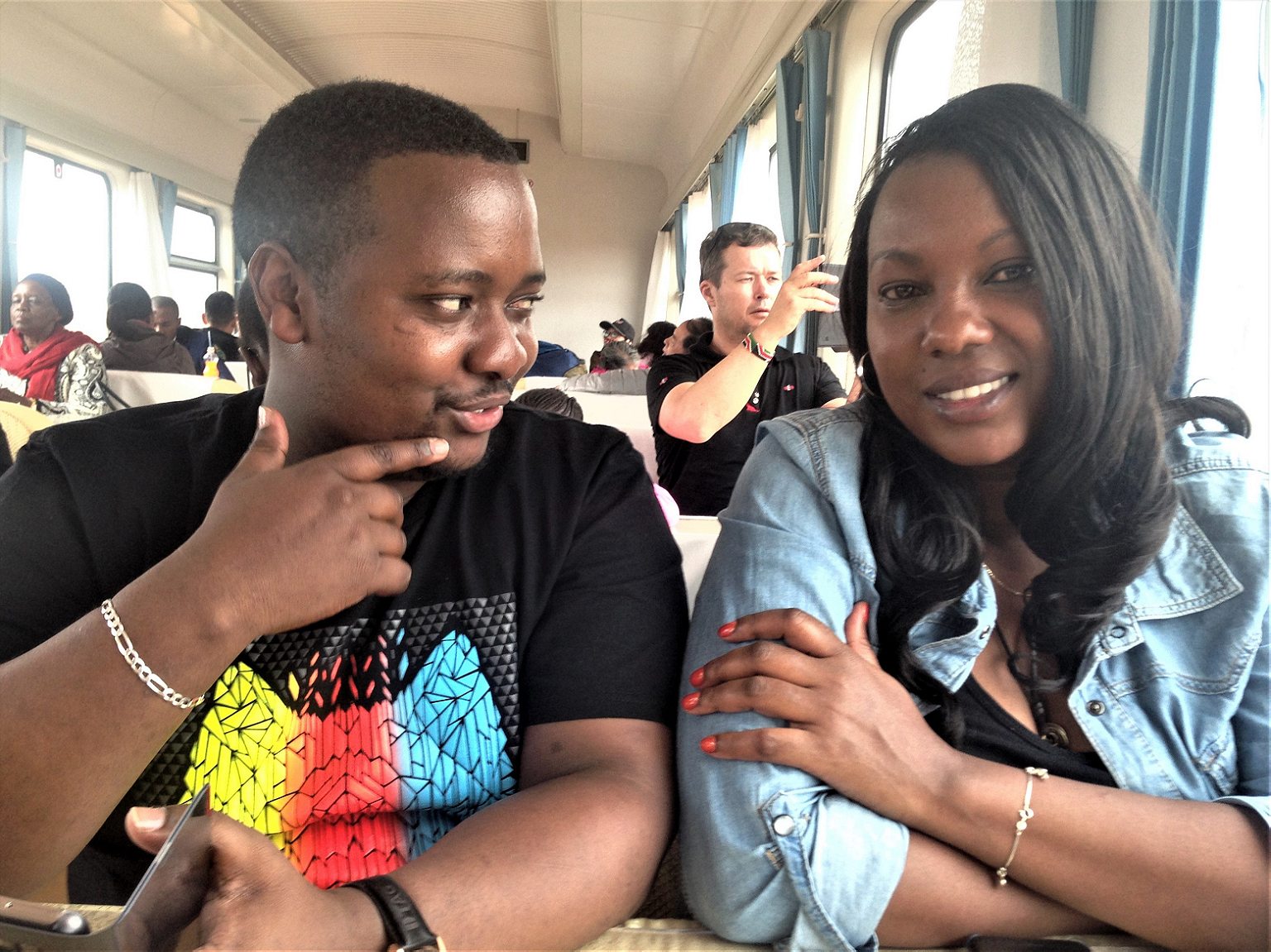
The bus figures prominently in my conversations with passengers. Martin Simiyu, a business consultant from Nairobi, says that if the train didn’t exist, 90 percent of the passengers would be on a bus right now. Even though there are more than 10 flights a day between Mombasa and Nairobi, they cost between $60 and $150—prohibitively expensive for most Kenyans.
Three-quarters of the way to Mombasa, an announcement comes over the train’s sound system telling us that we’re entering Tsavo National Park. We might see elephants, zebras, and giraffes, the voice says, as though we are on an amusement park ride. Some people, such as my neighbor Simiyu, respond excitedly. Standing up, he looks out for elephants and spots many in the distance.
The new train line is not the first manmade interference in the park’s natural habitat. The Nairobi–Mombasa highway splits the park into two sections, and the Kenya–Uganda Railway tracks run through sections of the park as well. But the large embankment built for the SGR presents particular dangers to the park’s 12,000 elephants. There are only six openings for elephants to pass, and eight elephants have died as a result since March 2017.
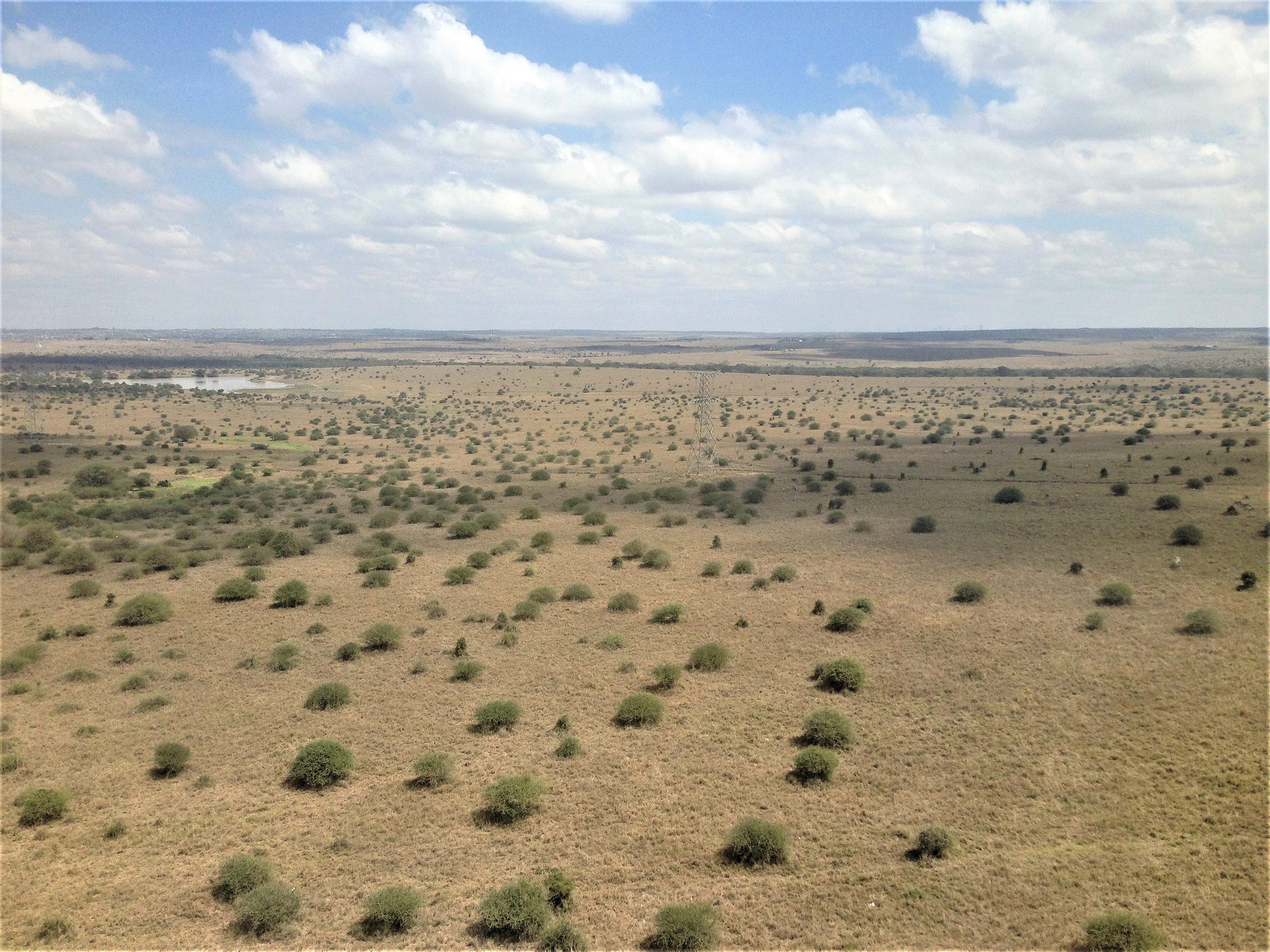
As we near Mombasa, the yellow savannah gives way to the lush landscape of the coast. We arrive at the Mombasa Terminus nearly five hours after we departed Nairobi. The Mombasa station is a striking structure with open staircases and a tall central pillar topped by several windowed disks. It’s located in a quiet residential area of Mombasa, at the top of a hill seven miles west of Mombasa proper.
Almost immediately, I realize I have no sense of the distance between the terminus and my destination: a hostel on the coast.
As passengers pile into buses and waiting cars, I open my Uber app in the hopes of landing a ride, but there are no drivers in the area. Slightly panicked, I look around at my options. The buses have all left the station, but vehicles are still scattered throughout the parking lot. A young driver named Edward offers his services. He suggests I pay 1,500 Kenyan shillings ($15) for the ride down to the hostel, and after some negotiating, we head to his tuk-tuk.
On our way down to Mombasa I realize why there are no Ubers available: A convoy of cargo trucks line the road leading to the train station, and traffic is at a standstill. Edward cuts through side streets lined with vegetable stalls to avoid the gridlock.
I chat with another passenger, Helen Ndune. Ndune has taken the train to drop her children off with her family in Mombasa, where she thought they would be safe during the election. This turns out to be a smart decision: A week later, disputes over the election results will lead to clashes in Nairobi’s city center.
I arrive at the hostel an hour and a half later. Grateful to be near Mombasa Beach, I spend the remaining hours of the day walking on the beach, eating octopus at an oceanside restaurant, and laying in a hammock in the hostel’s neon-lit courtyard. Late into the night, cheers from a rally for the Jubilee Alliance, President Uhuru Kenyatta’s multiparty coalition, penetrate the hostel’s walls: “Tuko pamoja! UhuRuto!” they chant. “We are together! President Uhuru and Deputy President Ruto!”
The Kenya–Uganda Railway was known locally as the Lunatic Express for the number of people who died during its construction
I wake up early the next morning for a shuttle that has been making daily trips to and from the train station. This time, it will cost me 400 shillings ($4) to go up the hill to the station. Along the way, I sit next to Andrew Kiptanui, a 30-year-old from Mombasa who is taking the train just for the experience.
Kiptanui was seven years old the last time he took a passenger train, in 1994. The old train, Kiptanui says, was virtually unusable. Indeed, the Kenya–Uganda Railway, known locally as the Lunatic Express for the number of people who died during its construction, was never affordable or fast. The overnight train took 12 to 13 hours to travel between the capital and Mombasa. Those who weren’t lucky enough to afford a bed in a first- or second-class compartment would often stand or sleep on the floor of the perennially overcrowded train. Its last journey was in April 2017.
As we pick up passengers on the way to the station, Kiptanui shows me videos his friend had sent of people waiting in line at the Mombasa Terminus at 4:30 a.m. The limited booking system, Kiptanui says, means people are making a killing reselling tickets to desperate passengers. Since July, seven people have been charged for illegally reselling tickets, but that hasn’t stopped the hawking.
As we approached the station, Kiptanui points to the tarmacked road below. “They hadn’t finished this when the train opened,” he tells me. Along with the booking system, the road had been another casualty of the SGR’s early launch. Chatter in the shuttle centers on the political elements of the train’s construction: Recent improvements to the country’s infrastructure, of which the railroad is the centerpiece, feature heavily in Kenyatta’s campaign for re-election. (He wins the election the following week, but the results are annulled by the Supreme Court; a new election is scheduled for Oct. 24.)
A man sitting next to Kiptanui is skeptical, positing that Kenyan citizens’ taxes would all go toward repaying the government’s debt to China. (The China Export-Import Bank loaned the Kenyan government $3.23 billion in total.) Kiptanui, agreeing with the man, adds that ticket prices will probably go up following the election.
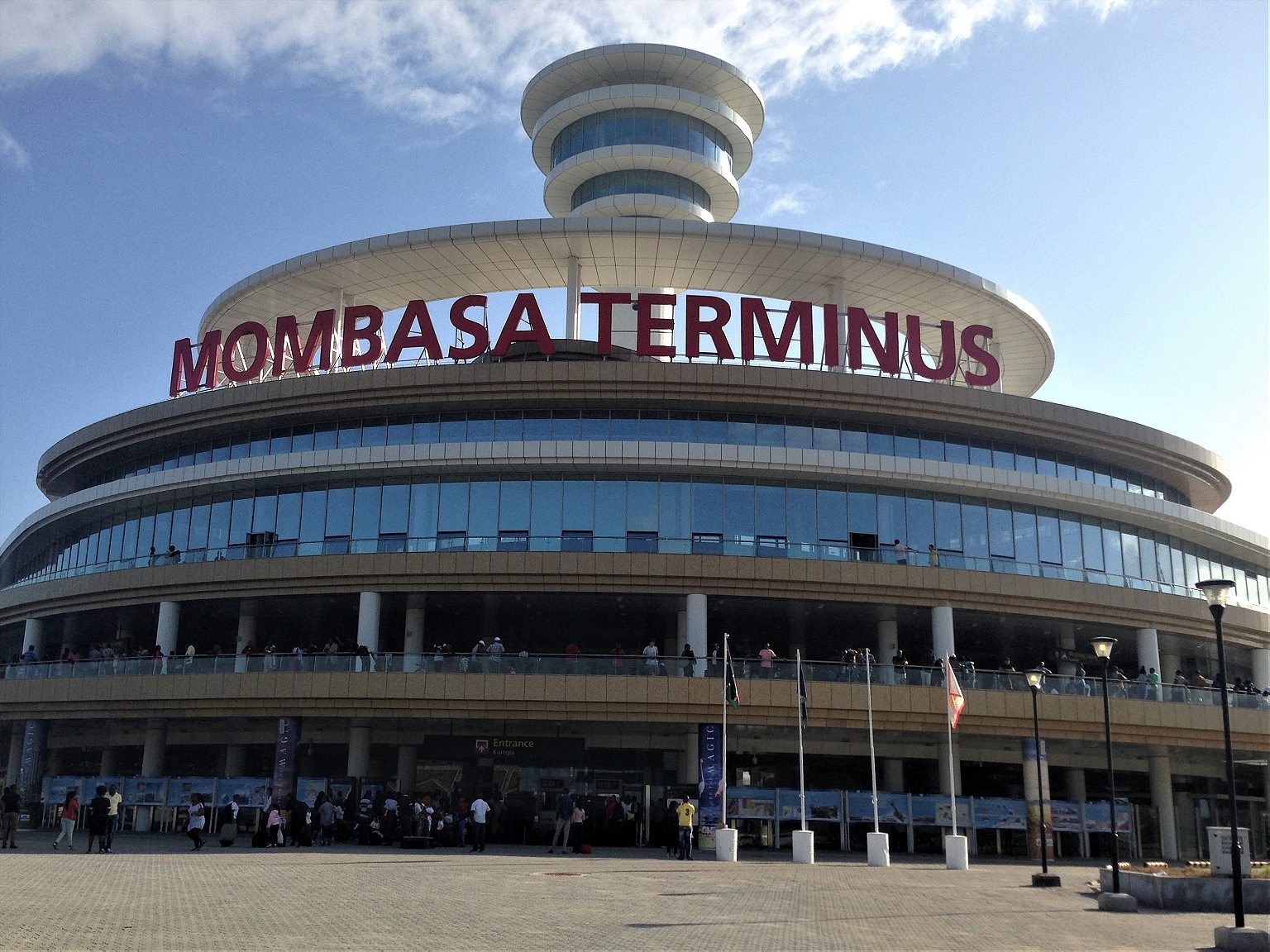
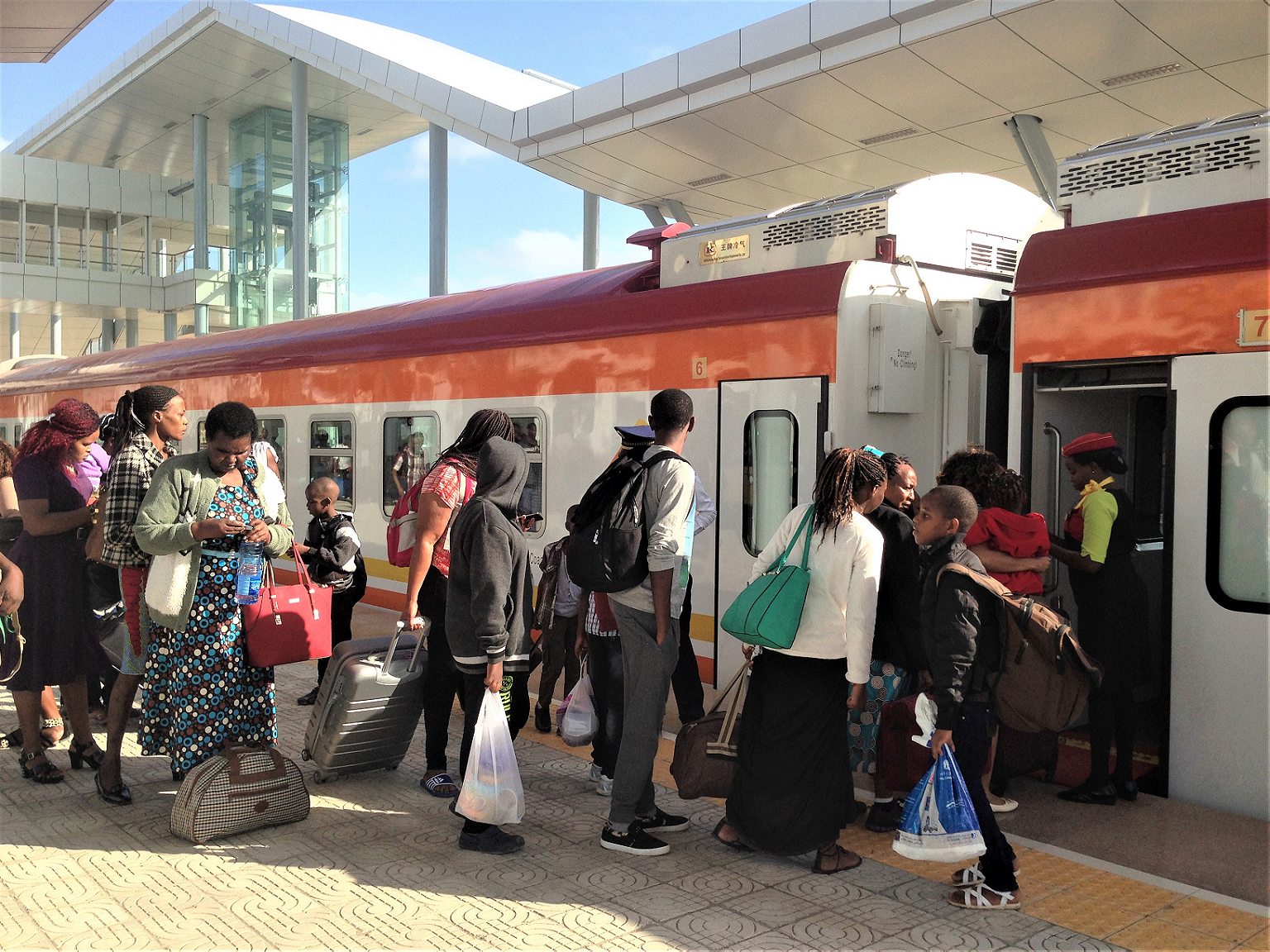
We arrived at the station in good time. Thirty minutes later, I take my seat in one of the train’s 11 economy coaches. The economy-class seats are arranged in blue-upholstered pews that face each other with small tables in the middle.
During the ride I learn that, unlike in first class, most passengers are not taking the train for the pure pleasure of it. Many are going home where they are registered to vote. (Kenya does not have an absentee ballot system.)
Others are riding for work. Moses Kimani, a chemist with Kenya’s Ministry of Health, is taking the train for the fifth time. He paid a scalper in Mombasa’s city center 1,200 shillings ($12) for an economy-class ticket. For him, traveling to the station just to get a ticket would have been too burdensome: “Even if a broker sells me a ticket for 1,500, I’ll buy it because you can’t compare five hours with 12 hours.”
For many, the train is convenient, but flawed. Unlike the bus, the train has no Wi-Fi, no entertainment (buses typically show movies), and extremely high food prices. Ann Wanguri, who is going home to vote, points out that a mandazi—a type of square donut made of fried dough, coconut, cinnamon, and nutmeg—costs 100 shillings ($1) on the train but just 10 shillings on the bus.
Just 15 minutes before we reach the Nairobi Terminus, I finally see some animals. To the west of the train is Nairobi National Park, a 45.3 square-mile sprawl of grass plains located just 4 miles south of the city. Looking down from a high overpass, I spot zebras and giraffes wandering through yellow brush like ants in high grass. I could gaze at them forever, but the train pushes on.
